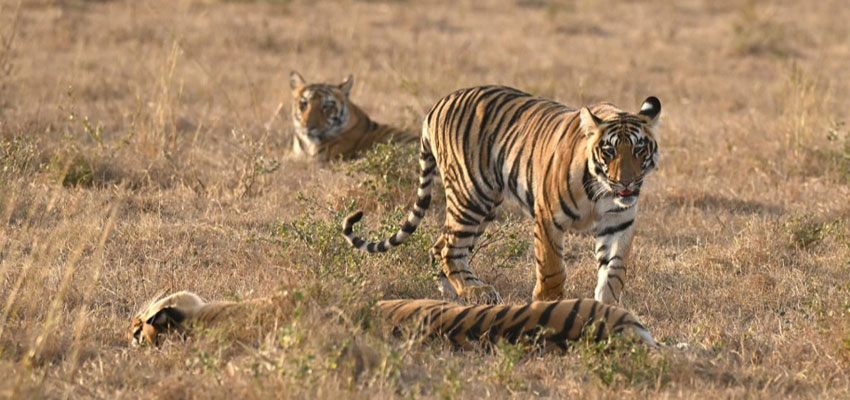Beyond Human Species

If you are residing in any metro city of India, you cannot escape the hectic traffic that not only often goes bumper-to-bumper, but even shoulder-to-shoulder. You are also the victim of several kinds of pollution emanating out of dust in the air, fuel from vehicles, smoke from open burning of waste and cement particles from construction activities.
The now and then escape from such unhealthy living which is peppered with lifestyle stress, is to go for holiday junkets. An ocean of holiday packages across countries are available at the click of the mouse. Many prefer the rubber stamp tourism kind, where you go on a speedy sojourn to famous and popular landmarks in the chosen destinations. That, a holiday rejuvenates you and many have taken this path of catharsis (punched with excitement) is of course good news.
As per a recent report by the United Nations' World Tourism Barometer, in the year 2024, international tourism witnessed a robust recovery, achieving 99% of pre-pandemic levels, with many destinations surpassing their 2019 visitor numbers. An estimated 1.4 billion international tourists (overnight visitors) were recorded globally in 2024, marking an 11% increase over 2023, equating to 140 million additional travellers.
While, the usual holidays where you enter the space of other human beings is most popular, one tends to forget that our planet Earth is also home to many species beyond homo sapiens. The animals, birds, aquatic creatures—in fact this whole fauna and flora, the forests and the trees, the gurgling waters in natural streams—all are an integral part of humanity. Yet, in this monstrous world of concretised development, they are looked upon as hurdles in our so-called progress. To know the other side, it is important to roam around natural spaces to understand life beyond the human species.
As we perched ourselves on the back seat of the open jeep to undertake the first safari through the Tadoba-Andhari Tiger Reserve near Nagpur, with the tyres kicking up dust, the thrill was out of the world. No traffic to encounter, just the noise of the rustling leaves, the sounds of the chirping birds, and the momentous glimpse of the deer, the wild dogs, the sloth bear, the nilgai, the bison—yes we saw them all. It’s here you realise that you as a human, is an unwanted creature in this animal kingdom. You are compelled to seal your lips if you want the main star of this jungle – the Royal Bengal Tiger, to catwalk near you. You cannot demand its appearance, you have to patiently wait and watch. The sudden call of the deer—the food of the tiger—to alert its fraternity suggests the tiger is somewhere in the vicinity. Yes, we saw eight tigers (in three safaris that were scheduled at different times) and they were an awesome sight.
Apart from the nature’s allocation of carnivorous animals that requires them to kill other smaller animals for their food, the sanctuary is an abode of silence and peace—often broken by the sweet chatter of varied fauna. The flora erupts as per season and water bodies ensure the existence of all. It’s here you realise why the wildlife requires its own spacious corridors and why man must not cut through forest areas for some road or a bridge. All creatures put together make a wonderful ecosystem and if all live as willed by God, human beings can stay in harmony. Hence, it’s important to take some time off to visit sanctuaries. Thankfully, the Tadoba sanctuary is well looked after by the Maharashtra Government and not more than 280 visitors are permitted each day.
As per the UN Tourism report, 2025 is expected to focus on sustainability, wildlife and adventure tourism. Wildlife tourism, in particular, is anticipated to see significant growth, reflecting a broader movement towards eco-tourism and sustainable travel practices. Let’s understand the importance of other species of this planet by visiting such places, but let’s not crowd them with our often high-handed presence.